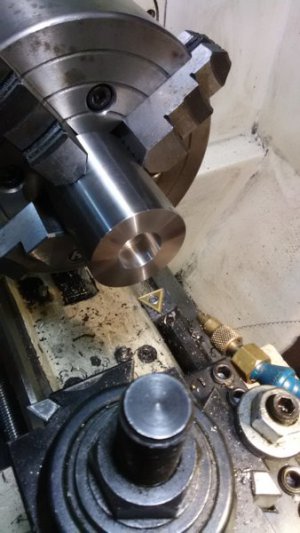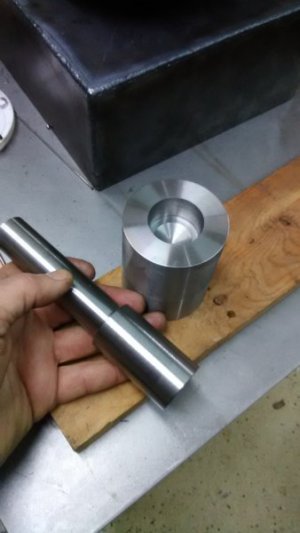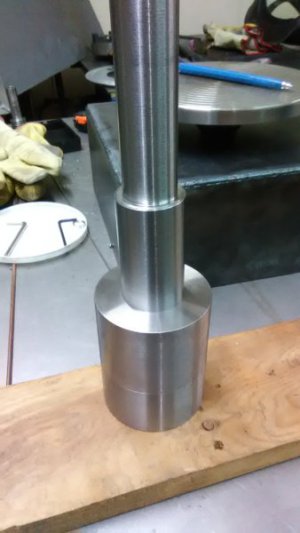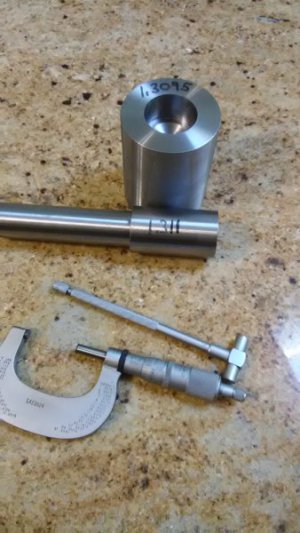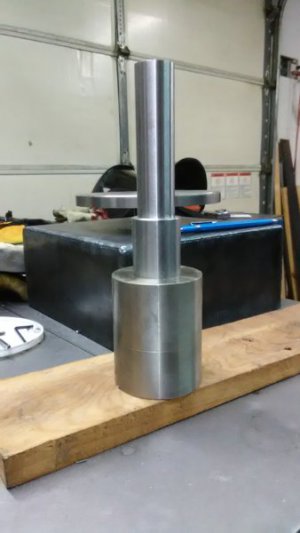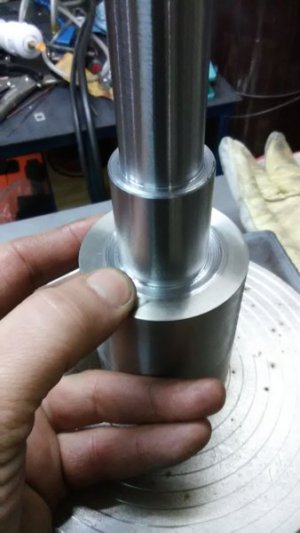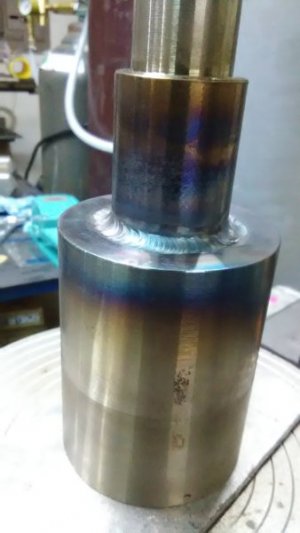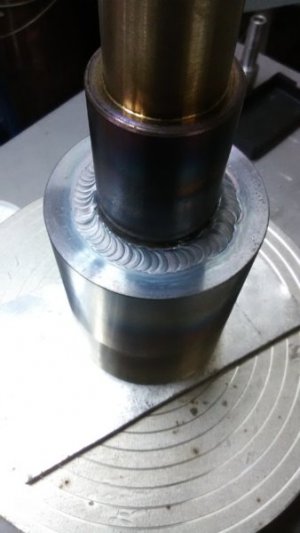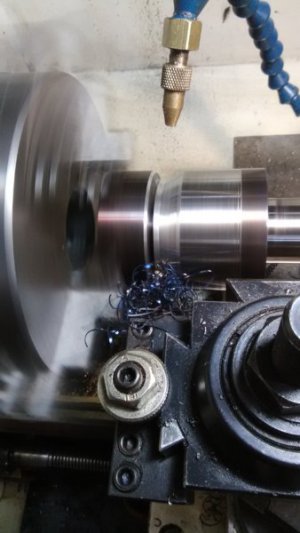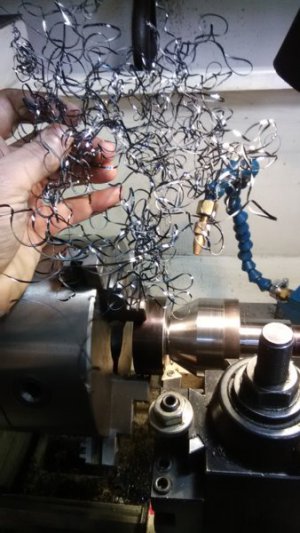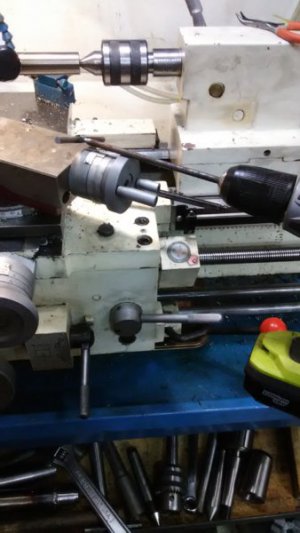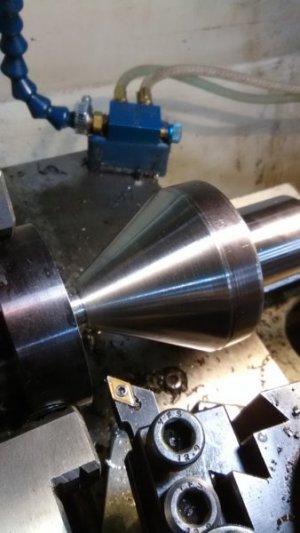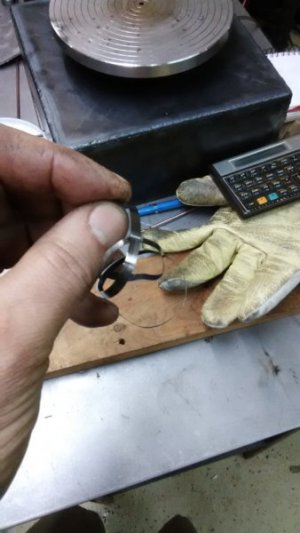... A few more baby steps on the bullnose center in-between enjoying this beautiful day ...
Admittedly, I scratched my head for a couple moments thinking how I wanted to hold this piece for the roughing cuts. Here's what I did and I'd love to hear how others might have tackled it.
I chucked it up in the 3 jaw using a technique that seems to work for me. First, my 3 jaw is pretty well behaved. Through most of it's useful range, it only loses center by a few thou at most. On my lathe, I recently re-tuned the tailstock and with past history, I trust the TS pretty-much all the way down to the end of the bed.
So... a technique I often use, is to bring the TS into position and lock it down. While the jaws are very lightly grabbing the piece, I put the end of the piece in the tailstock then, use a small, hand-held leverage bar to push it lightly (but firmly) against the live center in the TS. While holding that light pressure, snug-up the chuck jaws. The jaws will grab the part and hold so the piece will naturally spin on the axis of the tip of the live center.
Here's a picture. Mind you, I'm only using medium, 3-finger pressure to push that piece into the TS. NOTE: Normally, I like to hold the piece further into the jaws but, I only gave myself about 1.75" of wiggle room on the stock.
With the piece tightened securely, I was pleased to see that the piece only had 8 thou total runout. Not only was I pleased, I was a little surprised.
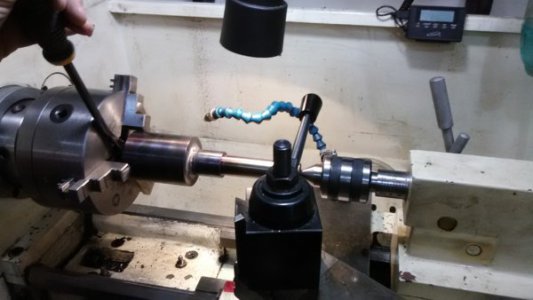
The weld cap came off without a struggle! Indeed, it's a little harder than the base material but, the carbide didn't even wince or groan.
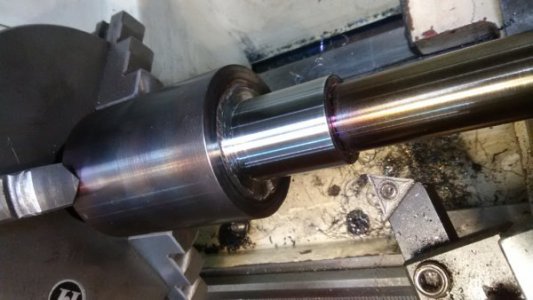
You're probably wondering why I put the big piece in the chuck given that the next step is to carve a rough taper in it. Here's why... I'm going to use a parting blade to dig down to about where the taper will come to a point. Trying to dig-away at the taper using normal inserts would not be a fruitful way of doing things. Anyhow, I wanted the business end of that piece next to the chuck for the parting operation. Another note: I'm parting a fairly large piece with a 3 jaw chuck. This is dangerous territory but, since the linear distance from one jaw to the next is less than the diameter of the part, I will be OK. Need to keep these things in mind when putting a lot of pressure on a piece. (ask me how I know).
And BTW, I really like that parting tool. It's a Shars brand that does very well with these small lathes. I've tried 3-4 different parting tools on this lathe and this one works the best for me. Let me know if anyone wants a part number and I'll look it up.
BTW: Kool mist works just fine for parting.
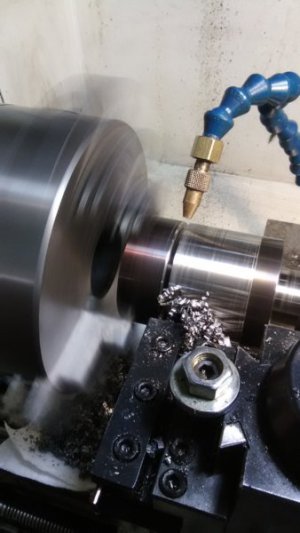
OK, going to take another dog walk now...
Happy upcoming New Year.
Ray C.
PS: Feel free to share ideas and start-up a conversation about different ways of doing this.

